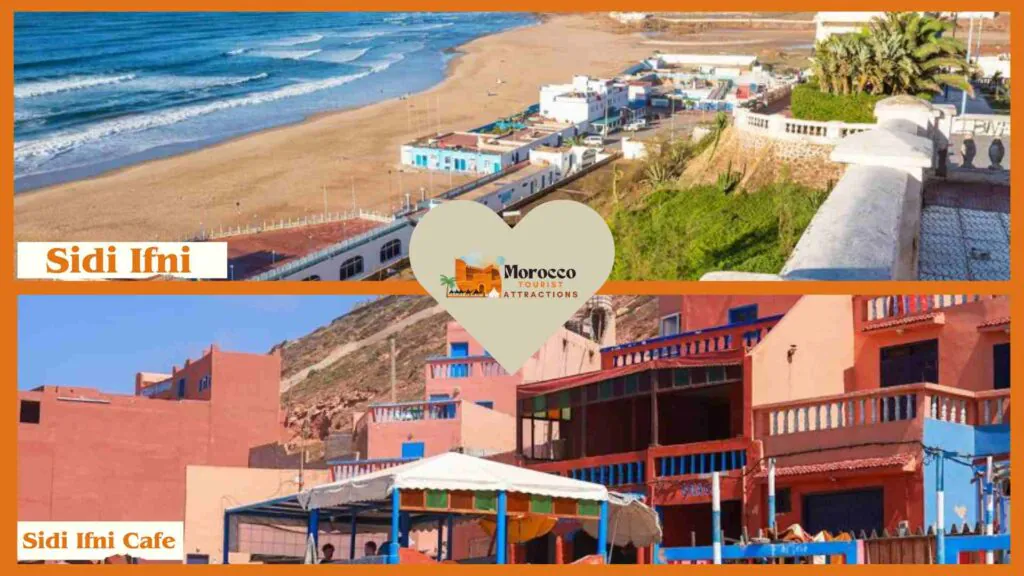In addition to its geographic location at the crossroads of three continents (Africa, the Atlantic Ocean, and the Mediterranean Sea), the Kingdom of Morocco has a strong cultural, historical, and contemporary presence.
Visit the city of Sidi Ifni, which is located in the province of Sidi Ifni and overlooks the Atlantic Ocean in the Guelmim-Oued Noun region of southwest Morocco.
The Shilha of the Ait Baamrane tribe, who live in Sidi Ifni and its surroundings and engage in trade with Europeans and northern Morocco, is the backbone of the economic stability of this tranquil coastal city.
Discover Sidi Infini with our Morocco Tourist Attractions Packages Now!
History of Sidi Ifni City | Best time to visit Sidi Ifni:

The Sidi Ifni City past
After the Spanish conquest in 1476, Sidi Ifni was enclaved in the present-day area and formed their settlement, which they called Santa Cruz de la Mar Pequena.
According to the documentation, they built a coastal fortress for the settlement, though the precise location could only be determined between Agadir and Tarfaya until the Saadian Rulers returned it to the Moroccan authorities in 1524.
Following the Spanish-Moroccan War, Sidi Ifni was included in the Treaty of Tangiers in 1860. The city was known as the “Scramble for Africa” during this time. During the occupation period, Spain once more connected Sidi Ifni to Western Sahara, or the so-called Spanish Sahara, as well as Rio de Oro and Saguia el-Hamra. This continued until 1952 when the entire Ifini region was placed under a Spanish West African protectorate.
History of Sidi Ifni City | Best time: Morocco gained full independence in 1956, but the Ifni War, which was fought by Moroccan forces and the Moroccan Liberation Army on the king’s orders, allowed the Spanish Army to gain control over the country territory.
By 1958, Spain and Morocco had signed the Angra de Cintra agreement, which had returned Cape Juby to Morocco but left the Ifni region under Spanish control. Sidi Ifni was turned over from Spain to Morocco in 1969.
The white and blue color scheme of the houses in Sidi Ifni today contrasts with the locals’ daily traditional customs. The best time to try water sports and activities is while strolling by Atlantic City’s waves.
When to go to Sidi Ifni?
Sidi Ifni is a good vacation spot all year long. It has a continental climate that alternates between warmth and coolness throughout the entire year due to its coastal location and proximity to the Moroccan Sahara (desert). From November to April, the winter months are mildly rainy.